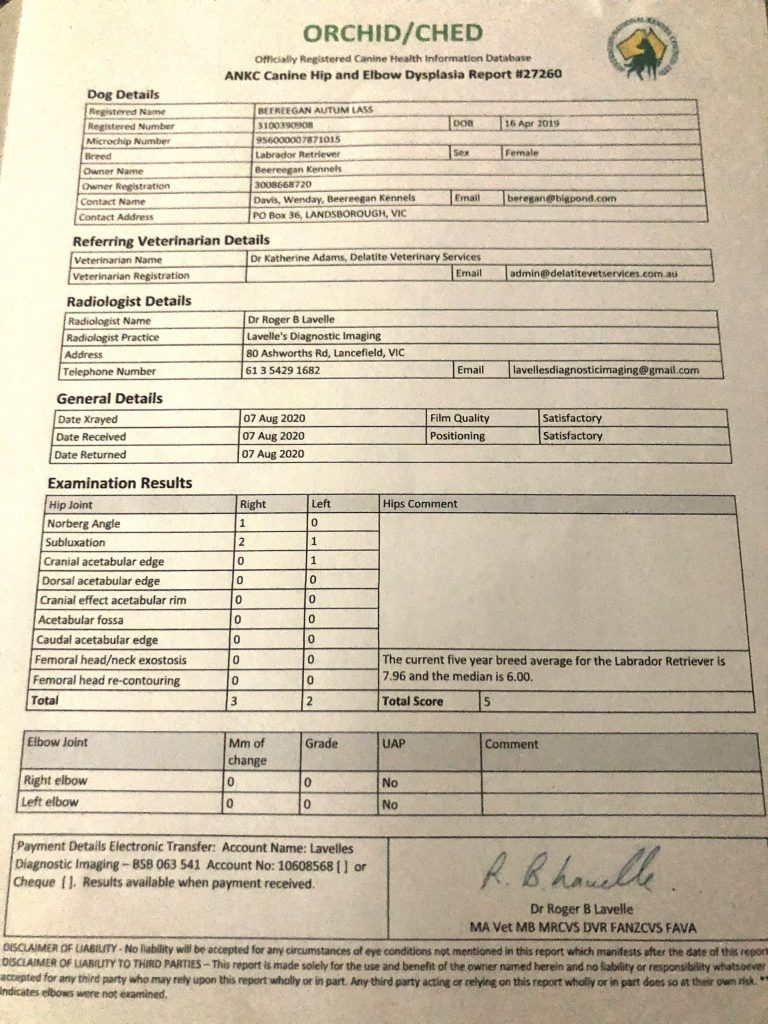Labrador hip scores [September 2019]
The Labrador Hip Score (in Australia), if it is to be used for breeding, should be below the breed average which is currently 9.3
The reason for this is so that the intent of breeding is to improve the breed, and by continuing to only use breeding stock with Hip Scores below the breed average, the overall quality of the breed is improving. It is also to help reduce the incidence and severity of hip dysplasia.
For registered Labrador breeders in Australia, it is my understanding that it is also a requirement for their breeding dogs to be tested and screened for hip dysplasia, and prior to being used for breeding. For example, in VIC, as a registered Labrador breeder with Dogs VIC/ANKC, you must lodge the hip score test results for breeding stock before you can register puppies from them.
WHAT AGE TO HIP SCORE A DOG?
In Australia, a dog must be at least 12 months of age before it should be Hip Scored.
HOW TO HIP SCORE A LABRADOR?
After the Labrador is 12 months of age it is taken to a Veterinarian to have a special set of x-rays taken of their hips. These x-rays are then forwarded to a specialist Veterinarian that assesses the hip x-rays and gives a score of each hip.
Each hip is assessed against nine different criteria, these being:
- Norberg angle
- Subluxation
- Cranial acetabular edge
- Dorsal acetabular edge
- Cranial effective acetabular rim
- Acetabular fossa
- Caudal acetabular edge
- Femoral head/neck exostosis
- Femoral head recontouring
The maximum score for most of these is six (6). The maximum score for each hip is 53. The maximum score for the dog is 106 (i.e. 2 x 53).
The ANKC breed average of hip scores for Labradors in Australia is 9.3. So it is recommended to only use breeding stock that have hip scores below the breed average.
WHAT DOES LOW HIP SCORE MEAN?
A low Hip Score is a score that is below the breed average.
WHY HIP SCORE DOGS?
Dogs are generally hip scored in order to assess their risk of developing hip problems such as Hip Dysplasia. Basically, the theory is that the lower the score is, the lower the assessed risk is of the dog developing hip dysplasia and/or if the dog does develop hip dysplasia, then the severity should also be reduced.
Unfortunately, no amount of testing etc can completely remove the risk of hip problems, such as hip dysplasia. But it certainly seems to be helping to reduce the risks.
Environmental factors can greatly influence its development, such as diet, over exercise in the growing puppy and excessive weight.
An example of Hip and Elbow scores :

